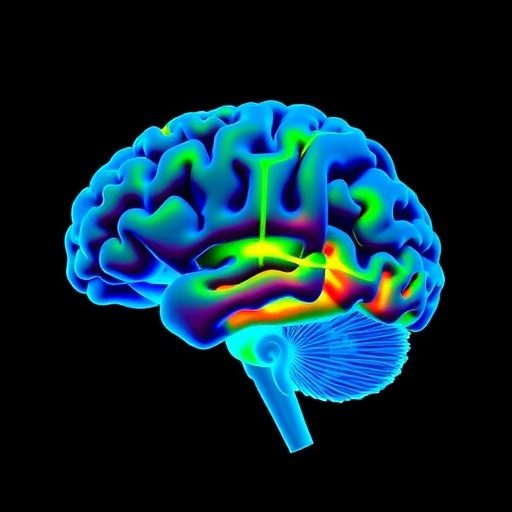In a groundbreaking study published in npj Parkinson’s Disease, researchers have unveiled unprecedented insights into the molecular and cellular underpinnings of Parkinson’s disease using an established rotenone-induced model. This work, led by Tsalenchuk, Farmer, Castro, and colleagues, employs cutting-edge epigenomic and transcriptional profiling techniques to dissect the unique nigral and cortical pathways profoundly affected during disease progression. Their findings illuminate previously unresolved mechanisms that may open vast new horizons for targeted therapeutic strategies against a disorder that affects millions worldwide.
Parkinson’s disease (PD) remains one of the most debilitating neurodegenerative disorders, characterized mainly by progressive motor symptoms such as tremors, rigidity, and bradykinesia. At the crux of PD pathology lies the loss of dopaminergic neurons in the substantia nigra pars compacta, but the intricate molecular pathways driving this degeneration have remained elusive. The rotenone model used by the research team mimics environmental toxin exposure thought to contribute to PD development, enabling a highly relevant framework to explore cellular responses in both nigral and cortical brain regions.
What sets this new study apart is the integrative application of both epigenomic and transcriptomic analyses performed simultaneously on the brain tissues affected by rotenone exposure. The researchers applied whole-genome bisulfite sequencing alongside high-throughput RNA sequencing, yielding a comprehensive view of the DNA methylation changes and gene expression alterations occurring during early and late disease stages. This dual approach has unlocked a wealth of data about how epigenetic reprogramming intersects with transcriptional shifts that underlie PD pathophysiology.
.adsslot_PjBc6wWUiQ{width:728px !important;height:90px !important;}
@media(max-width:1199px){ .adsslot_PjBc6wWUiQ{width:468px !important;height:60px !important;}
}
@media(max-width:767px){ .adsslot_PjBc6wWUiQ{width:320px !important;height:50px !important;}
}
ADVERTISEMENT
Their results uncovered distinct epigenetic signatures demarcating the substantia nigra and cortical areas, underscoring the brain region–specific vulnerability and response patterns characteristic of PD. Particularly intriguing was the identification of differentially methylated regions correlated with altered expression of critical genes involved in mitochondrial function, oxidative stress response, and neuroinflammatory pathways. These interconnected mechanisms are central to dopaminergic neuron survival and synaptic integrity and have long been implicated in PD but never before delineated with such spatial and temporal resolution.
A focal point of the study was the striking alteration in pathways regulating neuronal energetics and homeostasis. The researchers documented a consistent downregulation of genes governing mitochondrial biogenesis and activity concomitant with hypermethylation at their promoter regions in the nigral tissue. The cortical regions showed a divergent epigenomic pattern indicative of compensatory mechanisms attempting to counteract neurotoxic insults. These findings suggest a complex interplay between cell death signaling in the substantia nigra and neuroprotective adaptations in the cortex.
Equally significant were discoveries related to epigenetic modifications in genes orchestrating synaptic plasticity and neurotransmitter transport. The rotenone model induced marked disruptions in glutamatergic and GABAergic signaling pathways, both crucial for maintaining neuronal network stability. Epigenetic repression of synapse-associated genes in the substantia nigra may explain the progressive loss of neural connectivity and motor dysfunction hallmarking PD progression. Conversely, some cortical neurons exhibited hypermethylation changes possibly linked to altered cognitive processing in PD patients.
The study further dissected the inflammatory cascade activated during neurodegeneration and identified methylation-dependent regulatory elements modulating microglial and astrocytic gene expression profiles. Dysregulated inflammatory gene networks detected at the epigenomic level paralleled RNA expression changes suggesting an epigenetically primed neuroimmune environment. Understanding how glial cells’ epigenetic landscapes shift during disease could prove pivotal in developing interventions that modulate neuroinflammation effectively.
One of the most compelling aspects of this research lies in its potential to uncover epigenetic biomarkers predictive of disease onset and progression. Detecting such molecular signatures in peripheral tissues derived from the same pathways implicated in brain pathology may pave the way for early diagnosis and monitoring treatment efficacy. The integration of epigenomics with transcriptomics thus represents a powerful paradigm shift in precision medicine for Parkinson’s disease.
The researchers emphasize that the rotenone model faithfully recapitulates key features of sporadic PD, including oxidative stress and α-synuclein aggregation, but with unprecedented resolution of the underlying epigenetic landscape. This innovative approach provides a prototype for studying other neurodegenerative conditions where cell-type–specific epigenetic modifications influence disease trajectories. It also prompts re-evaluation of how environmental toxins induce stable yet reversible epigenetic states conducive to neurodegeneration.
Future directions highlighted by Tsalenchuk and collaborators include expanding these analyses to single-cell resolution to unravel heterogeneity within neuronal and glial populations. Such advancements will be critical to pinpointing vulnerable cell subtypes that could be selectively targeted by epigenetic therapies. Furthermore, investigation into pharmacological agents capable of modulating DNA methylation patterns offers promising avenues for halting or even reversing neurodegenerative changes in PD.
This work also challenges conventional perspectives that focus predominantly on genetic mutations by showcasing the dynamic role of epigenetic regulation in neurodegenerative disease. It underscores an emerging paradigm where gene-environment interactions sculpt epigenomic landscapes, dictating neuronal fate over the lifespan. Public health strategies might benefit from incorporating epigenetic risk assessment to design preventative measures against environmental contributions to PD.
Moreover, the identification of unique nigral and cortical pathways opens dialogue about differential treatment regimens tailored to brain region–specific pathologies. The cerebral cortex, traditionally considered less affected in PD motor symptoms, may harbor important compensatory circuits or pathological contributors to non-motor symptoms such as cognitive decline and mood disorders. Targeting these diverse pathways could enhance comprehensive management of Parkinson’s disease beyond dopaminergic replacement therapies.
The promising implications of this research resonate broadly, stimulating interest among neuroscientists, clinicians, and pharmaceutical developers alike. With epigenetics emerging as a frontier in understanding and combating Parkinson’s disease, the trajectories unveiled in this study could catalyze transformative breakthroughs benefiting millions affected by neurodegeneration globally.
Subject of Research: Epigenomic and transcriptional alterations in nigral and cortical brain regions in a rotenone-induced model of Parkinson’s disease
Article Title: Unique nigral and cortical pathways implicated by epigenomic and transcriptional analyses in rotenone Parkinson’s model
Article References:
Tsalenchuk, M., Farmer, K., Castro, S. et al. Unique nigral and cortical pathways implicated by epigenomic and transcriptional analyses in rotenone Parkinson’s model. npj Parkinsons Dis. 11, 217 (2025). https://doi.org/10.1038/s41531-025-01049-1
Image Credits: AI Generated
Tags: cellular responses in Parkinson’sdopaminergic neuron loss mechanismsenvironmental toxins and PDepigenomic profiling in Parkinson’sgroundbreaking findings in Parkinson’s diseasemotor symptom progression in Parkinson’sneurodegenerative disorder insightsnigral and cortical pathwaysParkinson’s disease researchrotenone-induced Parkinson’s modeltargeted therapies for Parkinson’stranscriptional analysis of neurodegeneration




